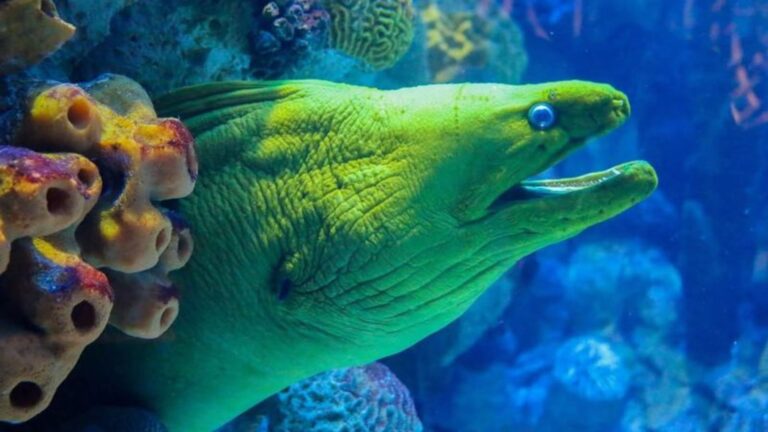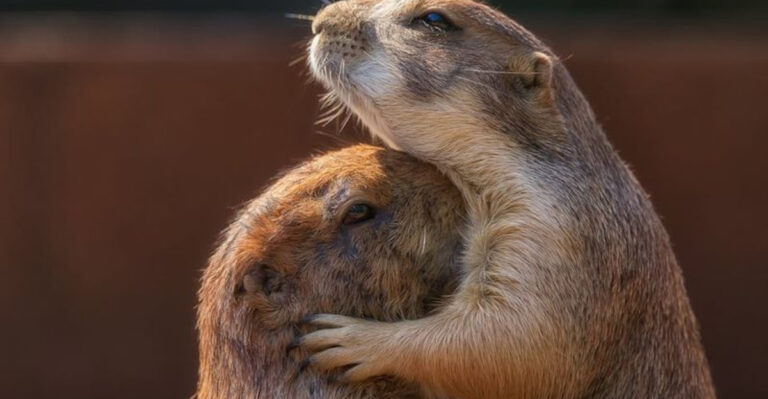14 Snakes Lurking In North America You Don’t Want To Step On
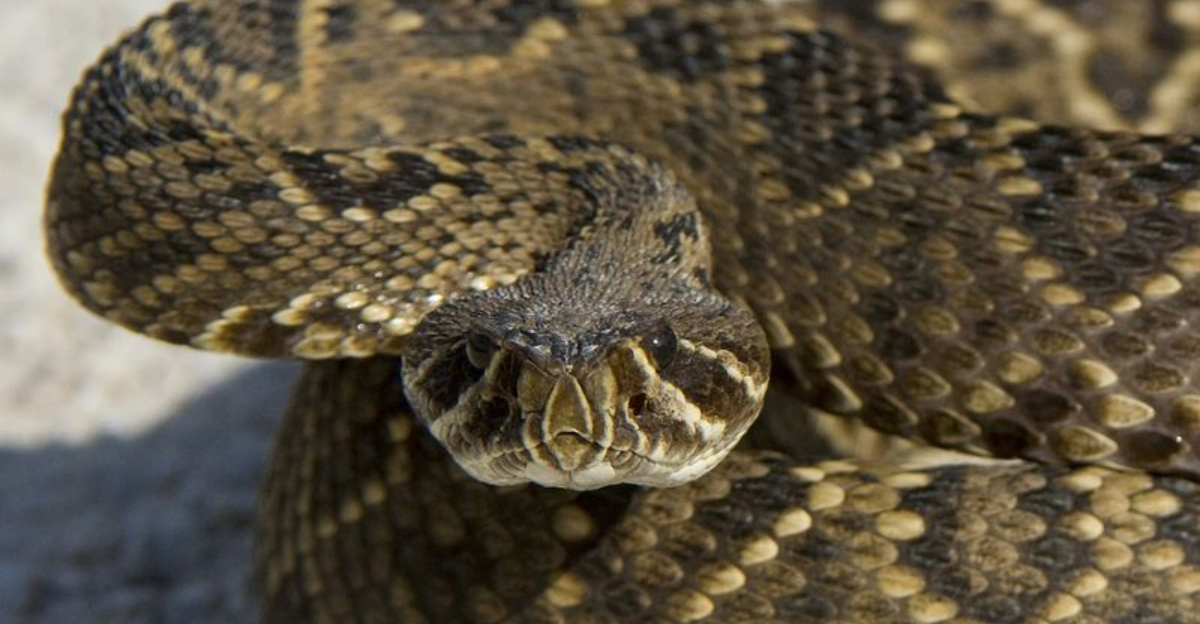
Hiking in North America’s wild landscapes can lead to surprise run-ins with slithering locals. Though snakes typically steer clear of people, one misstep could result in a painful and dangerous bite.
Learning which species pose the biggest risks could help keep your next outdoor trek much safer.
1. Desert Assassins: Mojave Rattlesnakes

Packing the most potent venom of any rattler, these desert dwellers combine neurotoxic and hemotoxic compounds for a truly terrifying bite. Their greenish-gray bodies disappear against the sandy landscape.
Many victims report the venom causes intense pain, breathing difficulties, and even paralysis. They hunt primarily at dawn and dusk when desert temperatures are bearable.
2. Copper-Headed Dangers

Those distinctive hourglass bands of copper-red might look beautiful, but they signal danger. Unlike their rattlesnake cousins, copperheads give no warning before striking.
Masters of camouflage, they disappear against fallen autumn leaves. Their bites, while rarely fatal to adults, cause extreme tissue damage and can be particularly dangerous for children and pets.
3. Silent Strikers: Eastern Diamondback Rattlesnakes
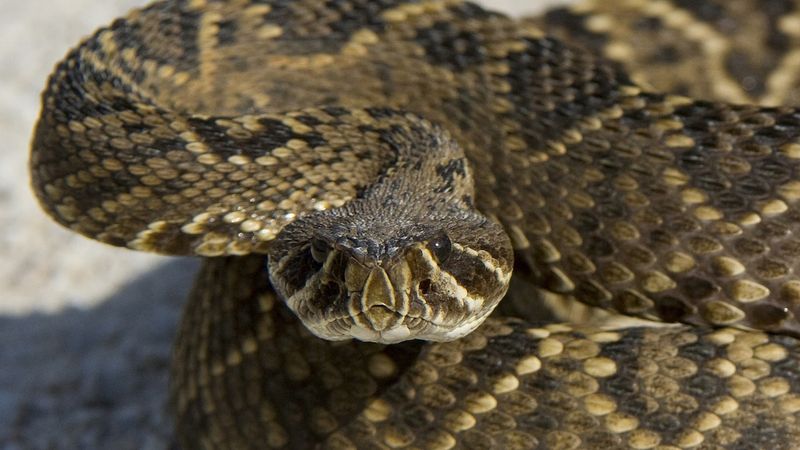
Like a land mine with scales, these heavyweight champions carry enough venom to seriously harm several adults. Their bold diamond pattern acts as a natural warning.
Despite their size, they strike with astonishing speed when provoked. Common in the southeastern states, they thrive in dry pine forests and palmetto thickets, camouflaging easily among fallen leaves.
4. Water Moccasins: Swamp Shadows
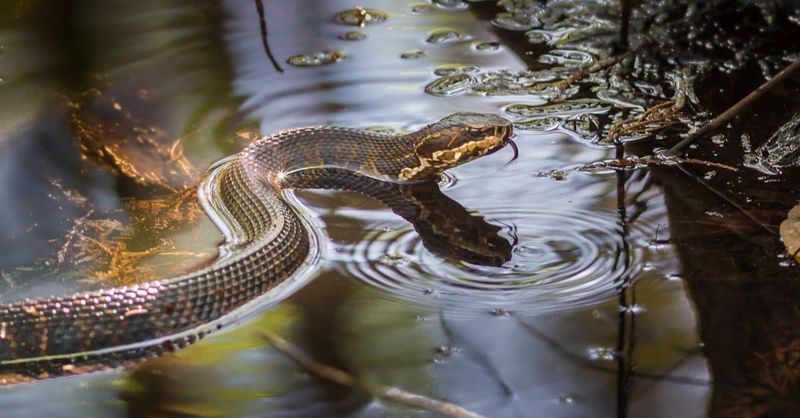
Ever seen a snake swimming with its entire body on the water’s surface? That’s your cue to back away fast. Water moccasins, also called cottonmouths, display their white mouths as a warning.
These semi-aquatic ambush predators lurk in southern swamps and waterways. Their venom contains enzymes that destroy tissue, making bites extremely painful and slow to heal.
5. Timber Rattlers: Forest Phantoms
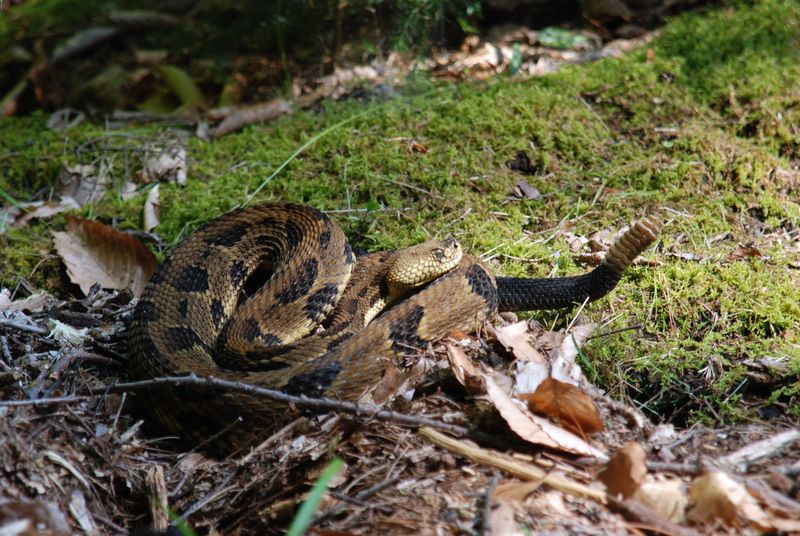
With bodies that seem painted by an artist, timber rattlesnakes vanish against forest floors. Their yellow, brown, or black patterns create perfect woodland camouflage.
History buffs might recognize them from the famous “Don’t Tread On Me” flag. Though generally shy, they stand their ground when cornered, delivering venom that can cause internal bleeding and tissue death.
6. Prairie Rattlesnakes: Grassland Guardians
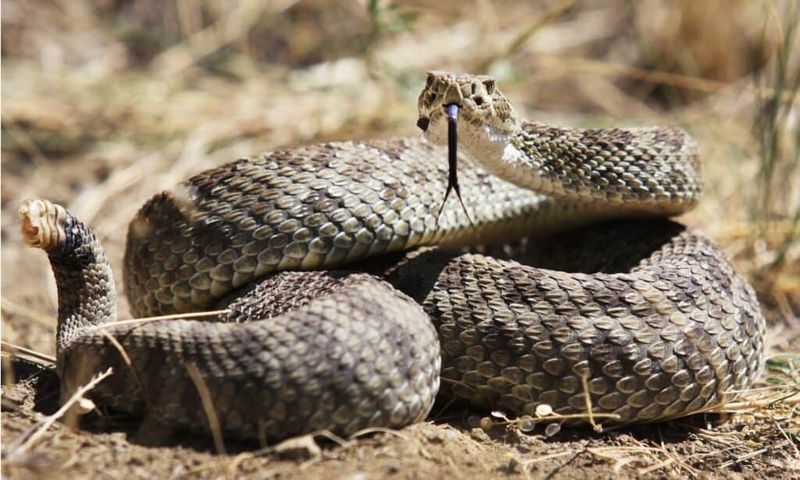
Hiding in prairie dog burrows across the Great Plains, these medium-sized rattlers control rodent populations but pose serious risks to humans. Their bodies match the golden grasses perfectly, making them nearly invisible.
A single bite delivers venom that destroys blood cells and tissue. Ranchers and farmers face the highest risk, especially during harvest seasons when these snakes are disturbed.
7. Coral Snake Caution: Red Touches Yellow
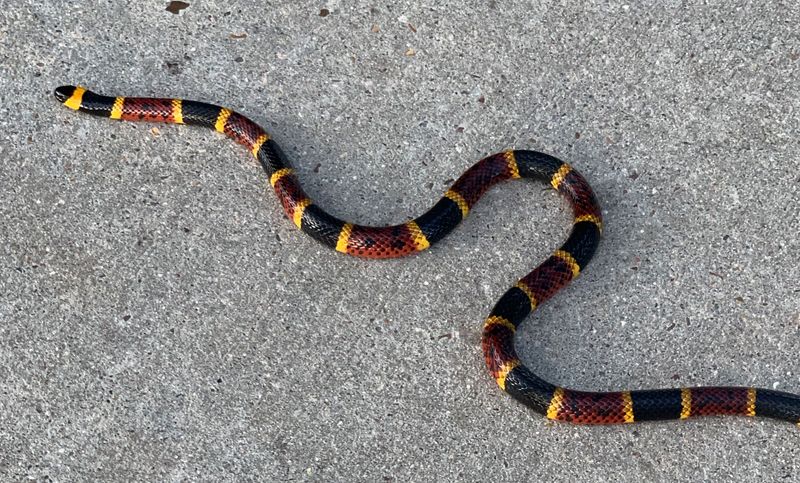
These brightly colored snakes pack a neurotoxic punch that can stop your breathing.
Unlike other venomous North American snakes, corals have fixed fangs rather than hinged ones. Though shy and rarely encountered, their bites require immediate medical attention and often antivenin treatment.
8. Western Diamondbacks: Sidewinder Surprises
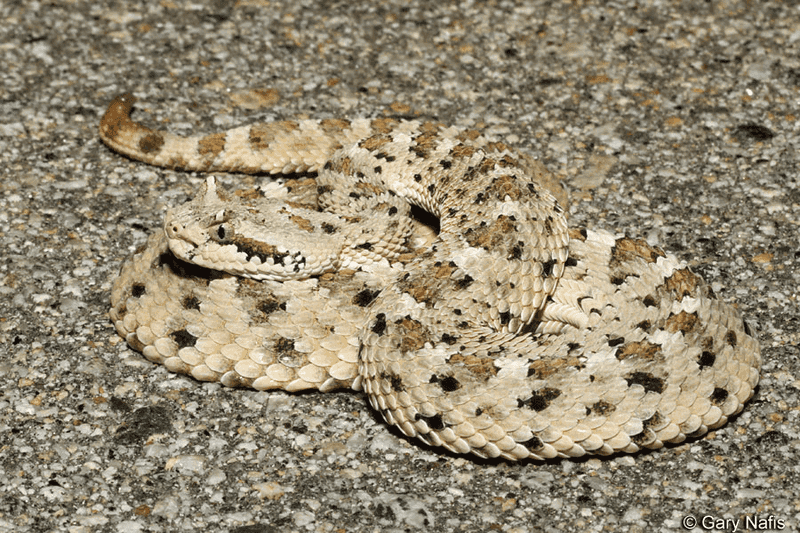
Famous for their sidewinding locomotion across desert sands, these rattlers leave distinctive J-shaped tracks. Their rattle sounds like bacon sizzling – a warning you should never ignore.
Responsible for more snakebites than any other North American species, they’re notoriously defensive. Their habitat ranges from desert floors to rocky hillsides across the southwestern states and northern Mexico.
9. Massasauga Rattlers: Wetland Warriors
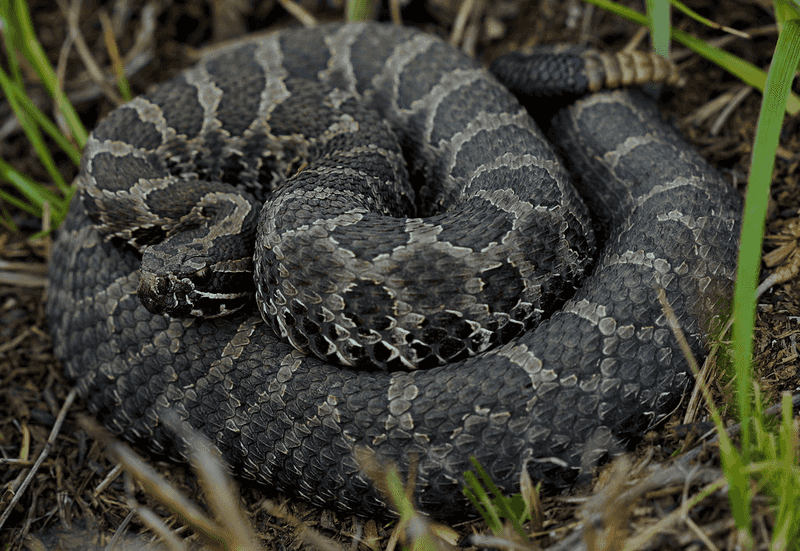
Small but mighty, these pygmy rattlesnakes lurk in wetlands and marshy areas across the Midwest and Great Lakes regions. Their gray bodies with dark blotches blend perfectly with muddy environments.
Though less venomous than their larger cousins, their bites still require medical attention. Climate change threatens their already fragmented habitat, making encounters potentially more common as they adapt.
10. Pygmy Rattlesnakes: Small But Mighty
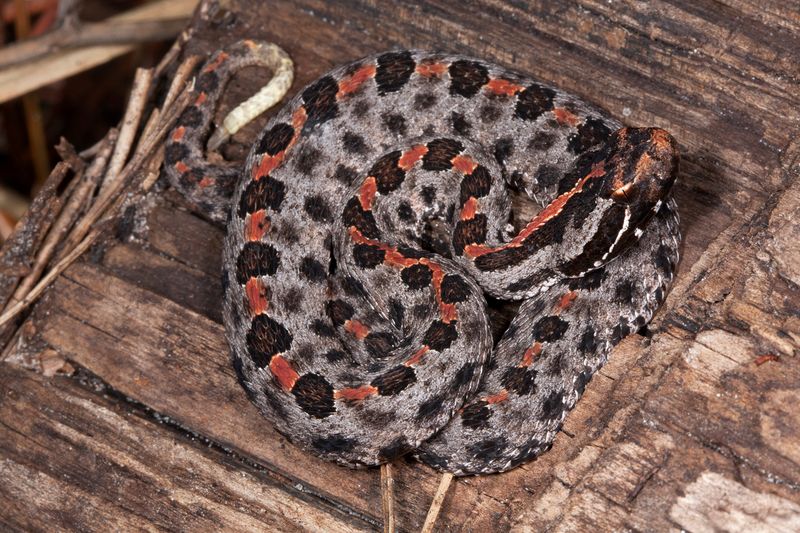
Barely reaching two feet long, these miniature menaces pack venom as potent as their larger relatives. Their tiny rattles produce a buzz that sounds more like an insect than a snake.
Found throughout the southeastern states, they prefer pine flatwoods and around wetland edges. Don’t let their size fool you – their aggressive temperament makes them quick to strike when startled.
11. Ridge-nosed Rattlers: Mountain Mysteries
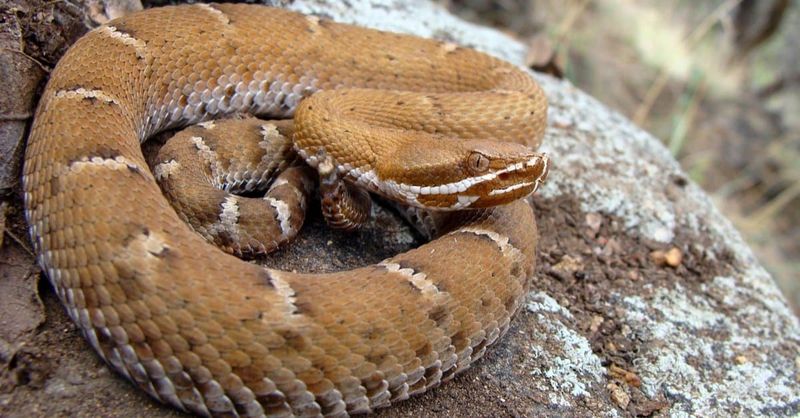
Hidden among rocky outcrops of southwestern mountain ranges, these endangered rattlesnakes sport distinctive upturned scales on their snouts. Their specialized habitat makes encounters rare but potentially dangerous.
Hikers in Arizona’s sky islands might stumble upon them during summer monsoon season. Their venom, while less studied than other species, causes significant pain and tissue damage.
12. Speckled Rattlesnakes: Desert Ghosts
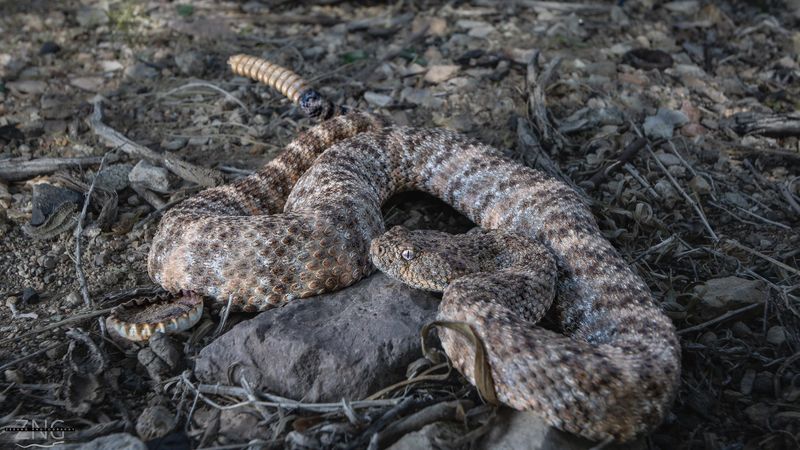
Nature’s masters of camouflage, these rattlers change color to match their surroundings – from pink to gray to brown depending on the rocks they call home. Desert hikers often don’t see them until it’s too late.
Their heavy bodies can deliver substantial venom in a single bite. Found throughout the southwestern deserts, they become most active during evening hours when temperatures cool.
13. Sidewinders: Sandy Slitherers
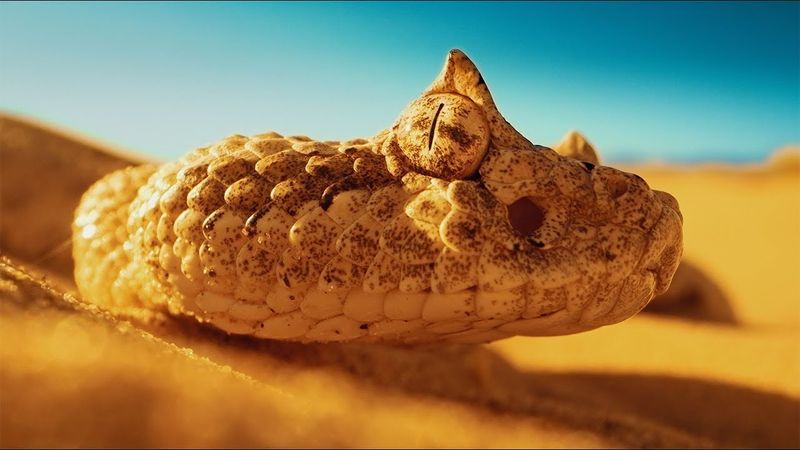
Watching these desert specialists move is like witnessing an alien locomotion – they literally throw their bodies sideways across hot sand, leaving J-shaped tracks behind. The distinctive horn-like scales above their eyes provide shade in harsh desert sun.
Though relatively small, their venom causes severe localized damage. They bury themselves in cool sand during daytime, making them easy to step on accidentally.
14. Black-tailed Rattlesnakes: Mountain Monarchs

With bodies that seem painted in sunset colors and distinctive solid black tails, these mountain dwellers are among the most beautiful – and dangerous – snakes in North America. They thrive in higher elevations where other rattlers can’t survive.
Rock climbers and hikers in the Southwest face the greatest risk of encounters. Their venom attacks both blood and tissue, causing severe pain and potential organ damage.




